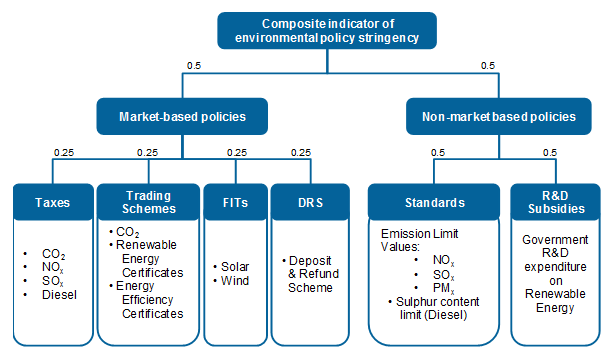Economic policies to foster green growth
How stringent are environmental policies?
Adequate measures of the stringency of environmental policies are needed to advance empirical work on effects on economic and environmental outcomes of such policies. The OECD has been developing proxies of environmental policy stringency (EPS) based on the measurement of stringency defined as the implicit or explicit cost of environmentally harmful behaviour. Details can be found below under useful links. The resulting indicator values can be compared across countries and over time, revealing a general increase in the stringency over the past two decades.
PUBLICATION
- How stringent are environmental policies? - This brochure presents new quantitative measures of environmental policy stringency (EPS) through the aggregation of information on selected environmental policy instruments, primarily related to climate and air pollution.
The EPS aggregates information on stringency across selected environmental policy instruments using simple scoring and weighting (Figure below). The first vintage of the EPS indexes covers most OECD countries over 1990s-2012 and has thereafter been extended to BRIICS countries. While a simplification of the multidimensional reality of environmental policies, the EPS indicators are a first tangible effort to measure environmental policy stringency internationally over a relatively long time horizon. Further work is proceeding on extending EPS indicators to cover more countries and environmental policy areas.
Aggregation structure of the composite index of EPS |
|
|
EMPIRICAL APPLICATIONS
- Do environmental policies matter for productivity growth?
- Environment and trade: Do stricter environmental policies hurt export competitiveness?
ADDITIONAL SOURCES
- Measuring environmental policy stringency – a review
- Measuring environmental policy stringency in developing countries
- GGKP Research Committee on Metrics and Indicators
- OECD database on environmental policy instruments
- OECD EPAU dataset on Renewable Energy Policies
CONTACT
- For more information, please contact Tomasz Koźluk or Grégoire Garsous
Related Documents
